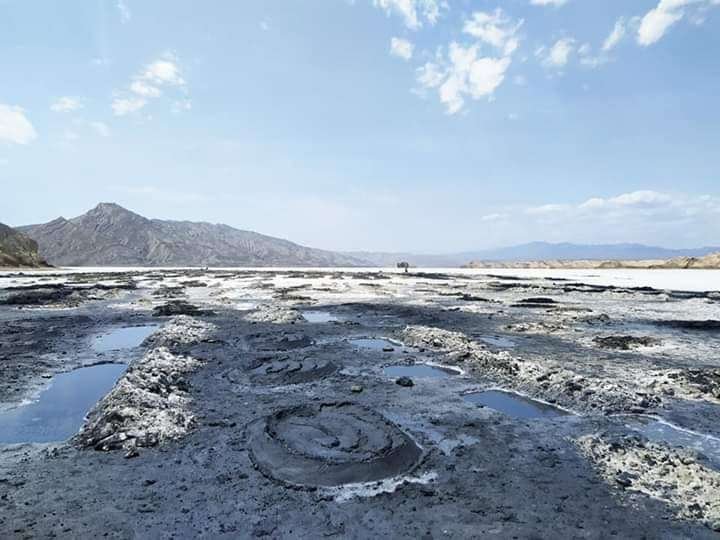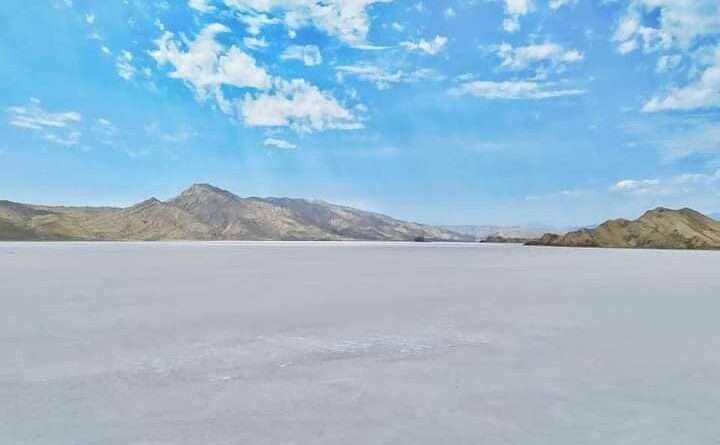Oksukon Lake: Salt & Therapeutic Mud
What is Oksukon’s Salt Caravan Geography?
From medieval camel trains to Soviet-era tramlines, Oksukon has long supplied salt to regional markets. Its vast 1 000 000 t reserve and annual 35 000 t harvest underpin local livelihoods, even as climate and overuse threaten the lake’s future.
Caravan Route Networks
For centuries, traders used camel caravans to carry rock salt from remote quarries to towns across Central Asia. These networks—long lines of camels or, later, tramlines—were vital for transporting heavy salt over mountain tracks.
One main artery began in Khujand and climbed north over the Khujand Pass. Caravans of up to 300 camels paused at waystations in Shurkul and Kamish before descending to Oksukon. Each camel, laden with ~12 t of salt quarried beside Hojii Mumin fortress, returned toward market in spring.
A second route branched near Shahriston on the Fergana highway, skirting the Kuramin Range foothills and following the Dahana Valley into the lake basin. In the 1930s, a narrow-gauge tramline alongside these trails accelerated salt haulage; its tracks and markers at Urta Kon and Katta Kon remain today.
Historical Timeline
- 10th c. First mentions by Arabic geographers of local salt extraction.
- 14th c. Caravan trade peaks, linking Khujand to Fergana via Oksukon.
- 19th c. Russian surveys document mud composition for health uses.
- 1936 Soviet tramline built for industrial salt transport.
- 1954 N.V. Kuznetsov calls for early conservation after documenting waymarkers.
- 1965 Tramline decommissioned; haulage reverts to camels and trucks.
- 2000s Spa resorts and peloid therapy centers emerge.
- 2018 Khujand State University begins ecological surveys.
- 2021 NGO management plan proposed to Ministry of Environment.
Therapeutic Geography
Oksukon’s bed hosts thick peloids—mineral-rich mud and salt—formed each summer as water evaporates. Rich in magnesium, calcium, and trace elements, these peloids deliver anti-inflammatory and skin-regenerating effects.

Mud Chemistry & Clinical Evidence
Lake Oksukon is Tajikistan’s largest source of therapeutic silty mud, with combined reserves in Oksukon and neighbouring Tanapchi exceeding 499 000 t. Beneath its perennial salt crust, a brown-black, oil-like peloid accumulates that is naturally rich in calcium, magnesium, boron and potassium alongside a variety of sulfate, carbonate and chloride salts.
This peloid is commercially extracted and “matured” on site. The Oksukon Mud Treatment Sanatorium, on the lake’s eastern shore, and a physiotherapy clinic in Khujand prepare it into warm baths and compresses used for rheumatic complaints, skin ailments and circulatory disorders. While no formal, peer-reviewed trials are published internationally, internal spa records consistently report high levels of patient-perceived symptom relief, and the sanatorium draws visitors from across Central Asia.
Ecology & Biodiversity
Oksukon’s salinity supports halophytes—Suaeda salsa, Salicornia europaea, and saltworts that stabilize shores. Halophilic microbes form biofilms, driving nutrient cycles for peloid formation.
Spring meltwater expands wetlands where brine shrimp (Artemia salina) feed migratory birds. Greater flamingo, Kentish plover, and black-winged stilt stop here; reedbeds shelter herons, egrets, and marsh warblers. These species make Oksukon important for saline-wetland conservation research.
Conservation & Threats
Open and unprotected, Oksukon faces pressures—balancing production and ecology hinges on hydrological cycles.
- Seasonal Flooding: Spring floods dilute salinity and wash away mud layers; increased flooding risks reserve depletion.
- Unregulated Harvesting: Annual extraction of ~35 000 t salt and 500 000 t mud thins peloid layers.
- Climate Change: Hotter summers create brittle crusts; warmer winters expose mud to wind erosion.
| Metric | Value |
|---|---|
| Salt Reserve | 1 000 000 t |
| Annual Yield | 35 000 t/year |
Table: Salt reserve vs annual harvest at Oksukon Lake
Local Communities & Cultural Traditions
Villages like Shurkul, Shaydon, and Kamish—home to Tajik, Uzbek, and Russian families—blend salt/mud extraction with small-scale farming on floodplains.
Each autumn, the Salt Harvest Festival features folk music, dance, and salted lamb feasts. Elders sing “Qul Oksukon,” a folk song honoring camel caravans and Hojii Mumin fortress.
Artisans craft decorative salt lamps and use mud pigments for pottery sold at Shaydon and Khujand bazaars. Traditional healers (tabibs) integrate peloids into home remedies alongside modern balneotherapy.
Despite tourism growth, many families practice seasonal transhumance—moving livestock in summer, harvesting salt/mud in winter—preserving rhythms aligned with the lake’s cycles.
FAQ
When is the best time to visit Oksukon?
August–September, after mud harvest and before winter floods.
How long do mud therapy treatments last?
Typically 7–14 days, with daily applications.
Can visitors collect mud themselves?
Only within designated areas and with local permission.
Is Oksukon Lake safe for bathing?
Yes, mud baths are safe when guided by resort staff.
Are there any entry fees?
No formal entry fee, but spa services are charged separately.
What Did We Learn Today?
- Historical Trade: Oksukon’s caravan networks have connected Central Asian markets for over a millennium.
- Healing Resources: The lake’s rich peloids offer proven therapeutic benefits for arthritis and skin conditions.
- Ecological Richness: Halophyte vegetation and migratory bird habitats highlight Oksukon’s unique saline-wetland biodiversity.
- Conservation Imperative: Sustainable management is crucial to balance salt and mud harvesting with ecological preservation.

